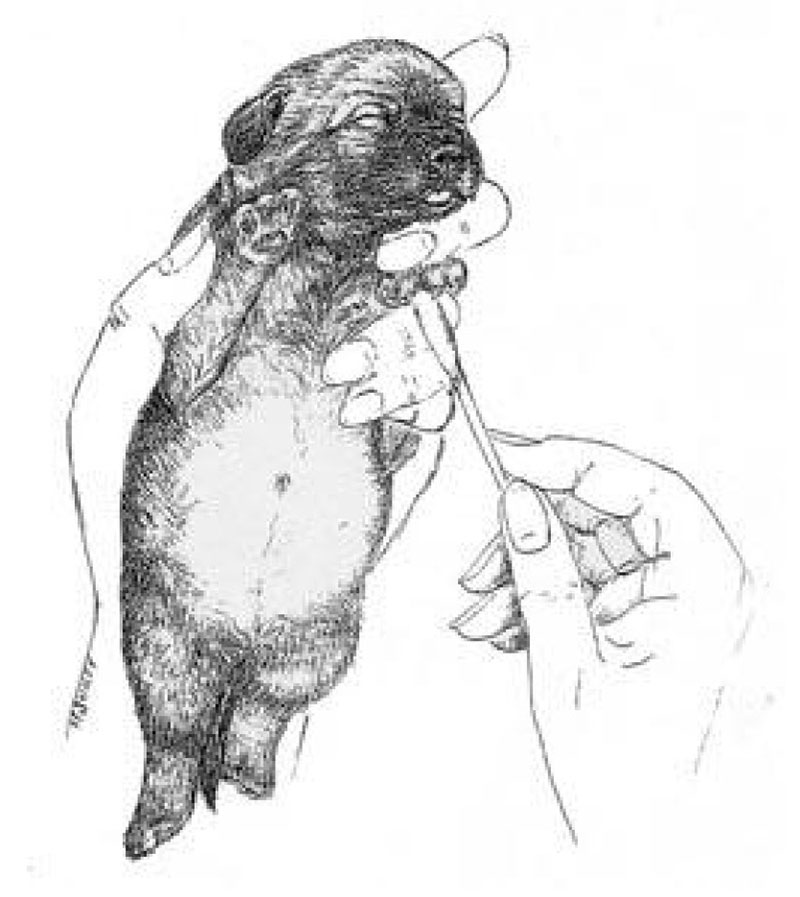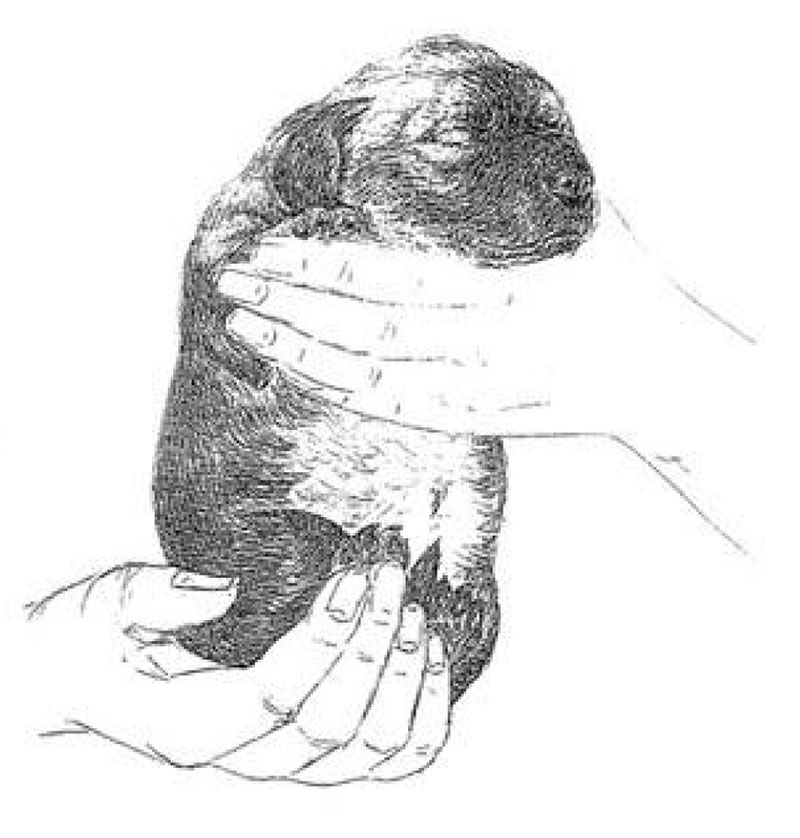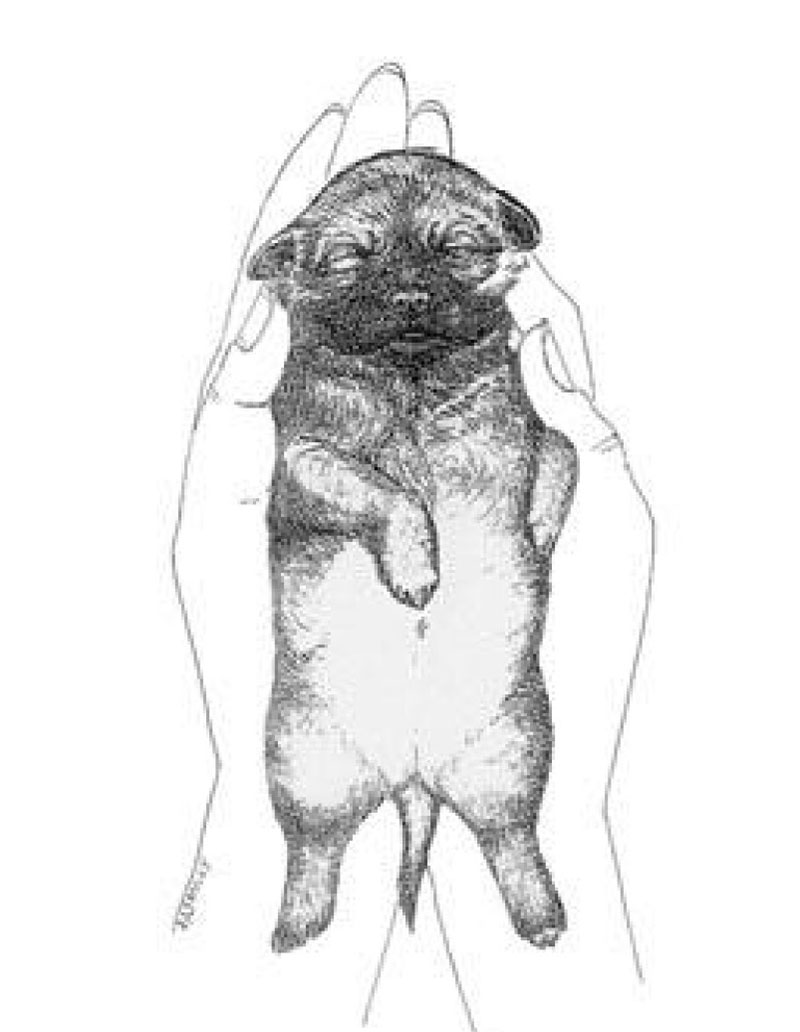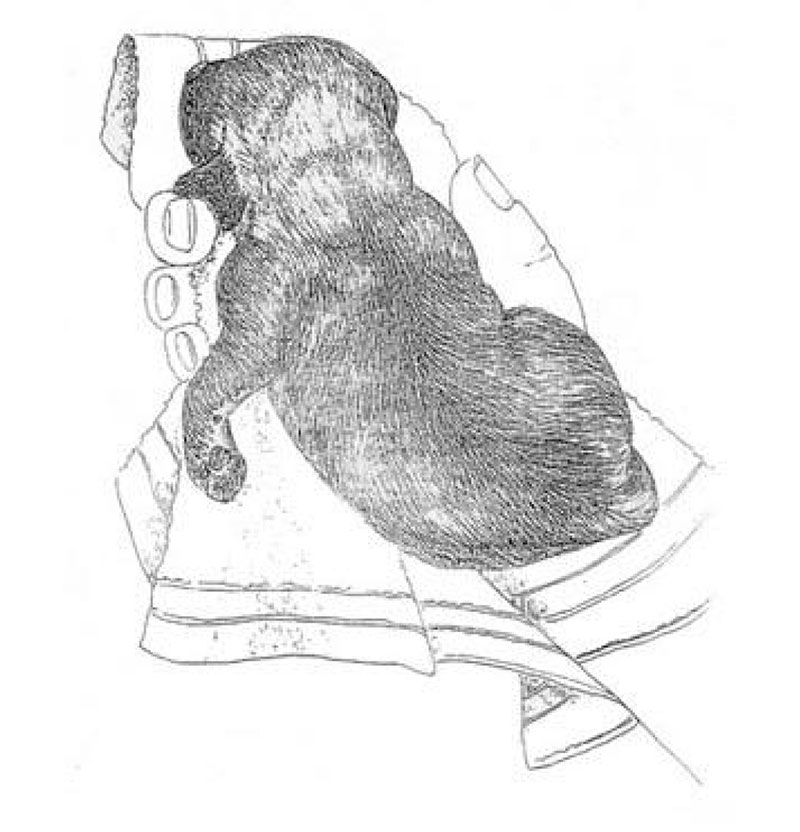 Early Neurological Stimulation
Program
Early Neurological Stimulation
Program
In recent years, the
Early Neurological Stimulation (ENS) approach has gained popularity.
Specifically, in the community of dog breeders. Keep reading if you've
ever wondered what Early Neurological Stimulation is and how it may
assist your puppy. We'll go over everything about Early Neurological
Stimulation, including its benefits, risks, and how ENS puppy training
works. Let's get started!
|
What is Early Neurological Stimulation in Dogs?
The US Military originally developed Early Neurological Stimulation to
increase the performance of future military canines. The "Bio Sensor"
program was developed by the US military and is also known as the
"Super Dog" program. Many breeders use this type of puppy raising,
which is now known as Early Neurological Stimulation.
The US Military found through study that pups' initial fast
neurological development phase occurs during the newborn period. This
is also the best time to do neuromuscular stimulation exercises. This
is because puppies are particularly sensitive and susceptible to input
during the newborn period.
So, what exactly is Early Neurological Stimulation? To put it another
way, ENS exposes puppies to moderate stimuli and stresses. These
stimulations can help them re-energize their nervous systems and
increase their inherent skills.
ENS puppy training includes a variety of body handling activities. The
activities are carried out throughout a puppy's neonatal stage, which
begins on the third day after birth and lasts until the sixteenth day.
Puppies are extremely sensitive and defenseless throughout this stage
of development. They don't open their eyes until day 10 and start
hearing at 2 weeks old. They can detect touch even if they can't see or
hear yet.
Early Neurological Stimulation has been demonstrated to aid pups'
neurological development, as well as their general growth, emotional
stability, and health.
According to some research, just 35 percent of a puppy's performance is
influenced by heredity, while the environment controls up to 65
percent. As a result, it's critical that a puppy receives adequate
physical touching, socialization, training, a healthy nutrition, and a
secure living environment right from the start. |
Benefits of Early Neurological Stimulation
Many dog breeders have chosen ENS since it offers numerous advantages
for the growth of puppies. Early desensitization is perhaps one of the
most important advantages of ENS for puppies. ENS helps pups get
desensitized to human contact and body handling, which is important for
their growth.
ENS has been shown to help puppies desensitize to stress by exposing
them to modest kinds of stress. This, in turn, can have a significant
impact on how individuals react to various stressors later in life. As
a consequence, pups can better handle stressful situations. They're
also less prone to respond aggressively, excessively anxiously, or
fearfully.
Naturally, this does not rule out the possibility that dogs exposed to
ENS during their neonatal phase do not respond to stress. Rather, they
are better at coping with stress and reacting appropriately.
Furthermore, puppies exposed to Early Neurological Stimulation during
the neonatal stage have been reported to be better at problem solving
and to have a more curious and energetic temperament.
Furthermore, study reveals that puppies that have been subjected to
Early Neurological Stimulation training have a better heart, immune
system, and hormonal, pituitary, and adrenal systems.
The following are some of the benefits of ENS for puppies:
Increased cardiovascular efficiency
Stronger Heartbeats
More powerful adrenal glands
Stress tolerance has improved.
Increased disease resistance |
Things to consider
Of fact, many of these advantages have been found, with conflicting
outcomes in scientific investigations. ENS puppy training, on the other
hand, helps puppies become used to human touch by providing necessary
body handling.
Early socializing is, nevertheless, an important aspect of a puppy's
growth. Although ENS for pups provides some socialization, it should be
used in conjunction with other methods. Hugging, petting, meeting
people of all ages, meeting other dogs, playing with littermates and
toys, and so on are examples of these activities.
Desensitization is also beneficial to all pups. Sights and noises,
household objects, textures and surfaces, and much more should all be
included in desensitization. This ensures that a puppy is exposed to a
variety of sounds and settings from an early age. As a result, they're
less prone to feel afraid, worried, or aggressive when confronted with
unexpected settings or sounds.
Finally, while ENS has numerous advantages, it should only be used with
utmost caution and attention. At all costs, stimulation and tension
should be maintained to a minimum. Furthermore, ENS exercises should
only be performed on puppies that do not have a lot of stress in their
lives. Small levels of stress are useful to a puppy's brain development
and wellbeing, while excessive stress is harmful.
Early Neurological Stimulation for Puppies, Training and Exercises
Five diverse body handling exercises make up the Early Neurological
Stimulation technique. All of this should be done once a day from the
third to the sixteenth day after birth. Only when you have completed
all of the exercises should you go on to another dog. Each stimulation
exercise should be no more than 3 to 5 seconds long.
The entire ENS training program will only take a few minutes every day
because each exercise lasts 3 to 5 seconds. |
The ENS puppy
training program consists of 5 key exercises:
- Tactical stimulation
- Head held erect
- Head pointed down
- Supine position
- Thermal stimulation
Keep in mind that you
should only do each of those exercises once a day. As previously said,
overstressing a puppy might have negative consequences. The ENS
approach is no exception. Too much stimulation during the newborn stage
might cause more damage than benefit for a puppy.
Let's look at each of
the exercises and how they're done in more detail... |
Tactical Stimulation
Tactical stimulation exercise
uses a Q-tip to gently stimulate the puppy between the toes of one foot
(any foot). For this exercise, you should hold the puppy in one hand
and gently tickle between the toes with a Q-tip for about 3 to 5
seconds.
Although your pup might react to
the tickling, it’s not necessary for them to react to the tickle. Above
all, you should make sure that you only do the exercise for a limited
amount of time, as even too much tickling can induce excessive stress
on the puppy.
 | Head Held Erect
The head held erect exercise is
done by holding the puppy straight up in both of your hands. With one
hand you can support the puppy’s bottom, while the other hand supports
their upper body and head. The puppy’s head should be directly above
its tail, so your pup is in a vertical position.
Again, you should be very gentle
and keep them in upright position for only 3 to 5 seconds.
|
Head Pointed Down
The head pointed down exercise
is very much similar to the head held erect stimulation. However,
you’ll be holding your pup upside down with their head towards the
ground.
For this exercise, make sure
you’re holding on to the puppy very firmly, yet gently, so they cannot
fall out of your hands. You’ll also want to make sure that their whole
body is in a vertical position, so be sure to support the puppy’s head
and whole body.
|
Supine Position
The
supine position is done by holding the puppy on its back. Hold the
puppy in both of your hands with their face towards the ceiling. The
puppy should lay horizontally in your palms while you support their
head and the whole body.
|
Thermal
Stimulation
Thermal stimulation introduces
the puppy to a colder temperature than its normally exposed to. For
this exercise, you first have to cool a clean, damp towel in the fridge
for at least 5 minutes. Then, you’ll place the towel in your hand and
place the puppy belly down on the cooled towel.
As your puppy is likely to
notice the change in temperature, it’s completely normal if they start
wiggling around. Don’t restrain your puppy, but make sure they’re
safely in your hand and can’t fall to the ground while moving.
|
Is Mental
Stimulation Tiring for dogs?
Physical and mental stimulation are both
necessary for any puppy or adult dog to operate effectively in their
daily life. Puppy and dog owners who do not provide adequate physical
and mental stimulation may get nervous and display undesirable
behaviors such as excessive barking or destructive behavior.
As a result, it's critical that you provide
your dog lots of physical activity as well as mental stimulation
through training, puzzles, and enjoyable activities. Mental
stimulation, on the other hand, is exhausting for dogs. Mental
stimulation is also supposed to make dogs more weary than physical
stimulation.
So, while exercise is important
for your dog's physical and mental health, you should never overlook
their emotional requirements. Dogs are sophisticated creatures who
require cerebral stimulation in addition to physical stimulus.
The Early Neurological
Stimulation method consists of 5 different body handling exercises that
should be done on puppies aged 3 to 16 days, once a day. These
exercises introduce very mild forms of stress to the puppy for the
duration of only 3 to 5 seconds per exercise. You should do each
exercise just once and then immediately move on to another.
ENS for puppies includes 5
different body handling exercises, such as:
- Tactile stimulation –
holding the puppy in one hand while gently tickling the toes with a
Q-tip.
- Head held erect –
holding the puppy in a vertical, upright position in both hands, one
hand supporting the bottom and the other supporting the upper body and
head.
- Head pointed down –
holding the puppy vertically in both hands in downward direction with
the head towards the ground.
- Supine position –
holding the puppy horizontally belly up on both of your hands.
- Thermal
stimulation – using a damp, cool towel and
placing it over your palm, then placing the puppy on the cool towel
with the belly touching the towel.
Final Thoughts on Early
Neurological Stimulation
To summarize, the Early Neurological Stimulation approach, in
combination with other types of socialization and enrichment, can
increase the neurological development, health, emotional stability,
stress endurance, and performance of pups. Although scientific evidence
is ambiguous, and ENS may not work for all pups, it does have
advantages. Body handling, which is exactly what ENS is, is an
excellent approach to introduce the puppy to human contact. However,
ENS should only be performed on puppies that are otherwise stress-free,
since excessive stress might trigger negative effects and impede
neurological development. |
|










